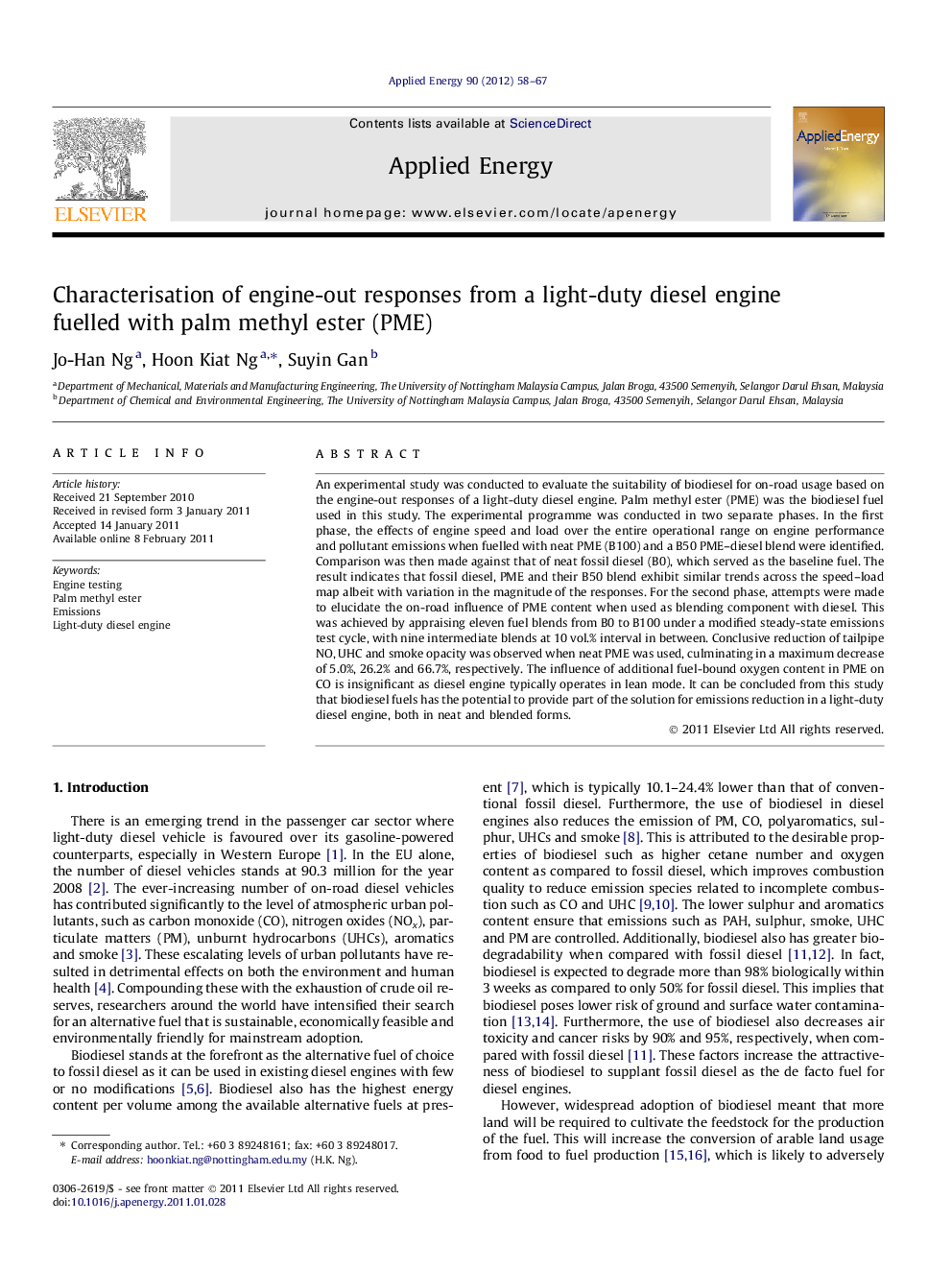| Article ID | Journal | Published Year | Pages | File Type |
|---|---|---|---|---|
| 243904 | Applied Energy | 2012 | 10 Pages |
An experimental study was conducted to evaluate the suitability of biodiesel for on-road usage based on the engine-out responses of a light-duty diesel engine. Palm methyl ester (PME) was the biodiesel fuel used in this study. The experimental programme was conducted in two separate phases. In the first phase, the effects of engine speed and load over the entire operational range on engine performance and pollutant emissions when fuelled with neat PME (B100) and a B50 PME–diesel blend were identified. Comparison was then made against that of neat fossil diesel (B0), which served as the baseline fuel. The result indicates that fossil diesel, PME and their B50 blend exhibit similar trends across the speed–load map albeit with variation in the magnitude of the responses. For the second phase, attempts were made to elucidate the on-road influence of PME content when used as blending component with diesel. This was achieved by appraising eleven fuel blends from B0 to B100 under a modified steady-state emissions test cycle, with nine intermediate blends at 10 vol.% interval in between. Conclusive reduction of tailpipe NO, UHC and smoke opacity was observed when neat PME was used, culminating in a maximum decrease of 5.0%, 26.2% and 66.7%, respectively. The influence of additional fuel-bound oxygen content in PME on CO is insignificant as diesel engine typically operates in lean mode. It can be concluded from this study that biodiesel fuels has the potential to provide part of the solution for emissions reduction in a light-duty diesel engine, both in neat and blended forms.
